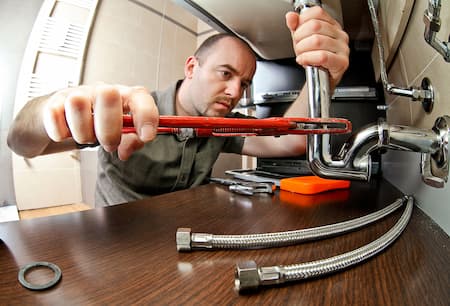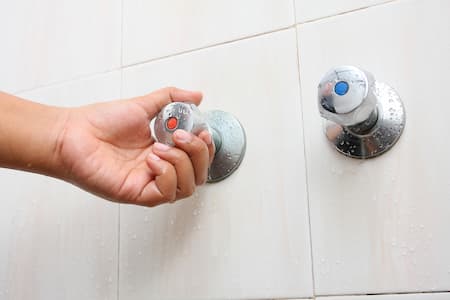
How Much Does It Cost To Diagnose A Leak?
Introduction
When it comes to maintaining a home, leak detection is one of those tasks that often gets pushed to the bottom of the to-do list. After all, who wants to think about plumbing issues when there are so many other things to consider? However, leaks can lead to significant damage and costly repairs if left unchecked. In this article, we will delve into the world of leak diagnosis on a budget, exploring Knights Plumbing and Drain the costs associated with identifying leaks in your home and providing practical tips for effective detection.
Leak Detection: What Is It and Why Is It Important?
Leak detection refers to the process of identifying leaks in various systems within your home, including plumbing, HVAC systems, roofs, and basements. The importance of timely leak detection cannot be overstated; even minor leaks can escalate into major problems if not addressed promptly.
Understanding Common Types of Leaks
- Plumbing Leaks: These are often found in pipes and fixtures throughout your home. They can result from corrosion, wear and tear, or improper installation.
- Roof Leaks: A leaking roof can lead to water damage within your home. It's crucial to inspect roofs regularly for signs of wear.
- Basement Leaks: Basements are prone to leaks due to groundwater seepage. Proper drainage systems can help mitigate this issue.
- HVAC Leaks: Air conditioning units and heating systems can also develop leaks over time.
Why You Shouldn’t Ignore Leak Detection
Ignoring leak detection can have dire consequences:
Leak Diagnosis on a Budget: Exploring the Costs of Identifying Leaks in Your Home
Identifying leaks doesn’t have to break the bank. While hiring professionals might seem like the best option, there are plenty of cost-effective methods you can employ yourself.
DIY Leak Detection Methods
1. Visual Inspections
A thorough visual inspection is often the first line of defense against leaks:
- Check under sinks for water stains or puddles.
- Inspect walls for discoloration or peeling paint.
- Look at your ceilings for any signs of moisture.
2. Water Meter Testing
You don't need a professional plumber for this:
If it has changed, you likely have a hidden leak.
3. Dye Testing
For toilet leaks specifically:
Cost Considerations for Professional Leak Detection Services
While DIY methods are great, sometimes you need professional help:
- Average costs for plumbing inspections range from $200–$500 depending on location and complexity.
- Infrared thermography scans or acoustic leak detection may cost between $300–$800.
Budget-Friendly Tools for Leak Detection
If you’re looking at DIY options seriously, investing in some basic tools might be worthwhile:
| Tool | Estimated Cost | Purpose | |--------------------|----------------------|--------------------------------------------------| | Moisture Meter | $50-$150 | Measures moisture levels in walls/floors | | Infrared Camera | $300-$1,500 | Detects temperature differences indicating leaks | | Pipe Inspection Camera | $100-$500 | Allows you to see inside pipes |
Signs You Need Leak Detection Services Now!
Recognizing warning signs early can save you big bucks later on:
1. Unexplained Water Bills
Have you noticed an uptick in your water bills but haven’t changed usage habits? That’s a red flag!
2. Moldy Smells
If there's an odd smell lingering around yet it’s not coming from trash or food—check for hidden moisture!
3. Puddles or Damp Spots
Any unexplained damp spots on floors or walls warrant immediate investigation.
4. Cracking Walls or Ceiling Stains
These could indicate severe underlying issues tied directly to leakage!
Cost-Saving Tips When Hiring Professionals
If you've decided it's time to call in the experts but don’t want it costing you an arm and a leg—here’s how to keep costs down:
Preventing Future Leaks Through Maintenance
Once you've identified and fixed any current leaks, consider these preventative measures:
Regular Inspections
Conduct regular inspections throughout different areas of your house—especially before seasonal changes when weather impacts structural integrity!
Proper Insulation
Ensure pipes are properly insulated during winter months to prevent freezing—and subsequent bursting—which leads straight back into our leak dilemma!

Drainage Systems
Investing in efficient drainage systems not only reduces basement flooding risks but protects surrounding foundations too.
Frequently Asked Questions (FAQs)
1. How do I know if I have a hidden leak?
Look out for increased water bills or unexplained damp patches—these could signal hidden leaks waiting to wreak havoc!
2. Can I detect a leak without special tools?
Absolutely! Visual inspections combined with simple tests like water meter checks suffice for most homeowners wanting quick answers.
3. What should I do if I find a leak?
Shut off the main water supply immediately! Then assess whether it’s something you feel comfortable fixing yourself—or if calling professionals is necessary.
4. Are certain areas more prone to leaks?
Yes! Areas like kitchens (pipes), bathrooms (toilets), basements (groundwater), and roofs (weather exposure) tend towards higher instances requiring vigilance!

5. How much does professional leak detection cost?
Costs vary based on service type but typically range around $200-$800 depending upon factors such as location complexity etc..
6. What happens if I ignore my leaky faucet?
Ignoring minor drips may seem harmless initially—but over time they lead into larger issues including mold formation & elevated utility bills—and nobody wants that headache!
Conclusion
Leak diagnosis doesn’t always have to be pricey; by taking proactive measures through DIY methods alongside understanding when professional help is needed—you'll effectively safeguard both your budget and home integrity! Remember that even small actions—the occasional inspection here or there—can translate into significant savings down the line while ensuring peace-of-mind knowing you're doing all possible care-wise for what matters most…your home sweet home!
Whether you're tackling plumbing issues yourself or enlisting expert assistance—being informed enables smarter decisions leading towards lasting solutions without breaking bank accounts wide open! So go ahead; take control today by implementing these strategies—the future stability (and comfort!) of your residence depends upon it!